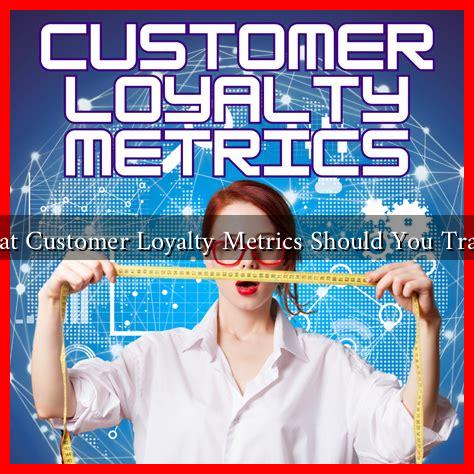-
Table of Contents
What Customer Loyalty Metrics Should You Track?
In today’s competitive marketplace, understanding customer loyalty is crucial for businesses aiming to foster long-term relationships with their clients. Customer loyalty metrics provide insights into how well a company retains its customers and the overall satisfaction levels of its clientele. By tracking these metrics, businesses can make informed decisions that enhance customer experience and drive growth. This article explores the essential customer loyalty metrics you should track to ensure your business thrives.
Understanding Customer Loyalty Metrics
Customer loyalty metrics are quantitative measures that help businesses assess the strength of their relationships with customers. These metrics can reveal how likely customers are to return, recommend your brand, and engage with your products or services. Here are some key metrics to consider:
1. Net Promoter Score (NPS)
The Net Promoter Score (NPS) is a widely used metric that gauges customer loyalty by asking a simple question: “On a scale of 0-10, how likely are you to recommend our company to a friend or colleague?” Based on their responses, customers are categorized into three groups:
- Promoters (9-10): Loyal customers who are likely to make repeat purchases and refer others.
- Passives (7-8): Satisfied but unenthusiastic customers who may switch to competitors.
- Detractors (0-6): Unhappy customers who can damage your brand through negative word-of-mouth.
Tracking NPS over time can help businesses identify trends in customer loyalty and areas for improvement. For example, a company like Apple consistently scores high on NPS, reflecting its strong customer loyalty and brand advocacy.
2. Customer Retention Rate (CRR)
The Customer Retention Rate (CRR) measures the percentage of customers a business retains over a specific period. A high retention rate indicates that customers are satisfied and willing to continue their relationship with the brand. To calculate CRR, use the following formula:
CRR = ((E-N)/S) x 100
- E: Number of customers at the end of the period.
- N: Number of new customers acquired during the period.
- S: Number of customers at the start of the period.
For instance, if a subscription service starts with 100 customers, gains 20 new customers, and ends with 90, the CRR would be 70%. This metric is vital for understanding customer loyalty and the effectiveness of retention strategies.
3. Customer Lifetime Value (CLV)
Customer Lifetime Value (CLV) estimates the total revenue a business can expect from a single customer throughout their relationship. This metric helps businesses understand the long-term value of acquiring and retaining customers. To calculate CLV, consider the following formula:
CLV = Average Purchase Value x Purchase Frequency x Customer Lifespan
For example, if a customer spends $100 per purchase, makes 5 purchases a year, and remains a customer for 10 years, the CLV would be $5,000. Companies like Amazon leverage CLV to tailor their marketing strategies and enhance customer loyalty.
4. Customer Satisfaction Score (CSAT)
The Customer Satisfaction Score (CSAT) measures how satisfied customers are with a specific interaction or overall experience. Typically, customers are asked to rate their satisfaction on a scale of 1-5 or 1-10. A higher CSAT score indicates a positive customer experience, which is crucial for fostering loyalty.
For instance, after a purchase, a retailer might send a survey asking customers to rate their satisfaction. Tracking CSAT over time can help identify trends and areas for improvement, ultimately enhancing customer loyalty.
5. Churn Rate
The churn rate measures the percentage of customers who stop doing business with a company during a specific period. A high churn rate can indicate dissatisfaction and is a critical metric for understanding customer loyalty. To calculate churn rate, use the formula:
Churn Rate = (Customers Lost During Period / Total Customers at Start of Period) x 100
For example, if a company starts with 200 customers and loses 20 over a month, the churn rate would be 10%. Reducing churn is essential for improving customer loyalty and overall business health.
Conclusion
Tracking customer loyalty metrics is essential for any business aiming to build lasting relationships with its customers. By focusing on metrics such as Net Promoter Score, Customer Retention Rate, Customer Lifetime Value, Customer Satisfaction Score, and Churn Rate, businesses can gain valuable insights into customer behavior and preferences. These metrics not only help identify areas for improvement but also guide strategic decisions that enhance customer experience and drive growth.
In a world where customer loyalty is increasingly hard to earn, leveraging these metrics can set your business apart from the competition. For more insights on customer loyalty, consider exploring resources from Forbes.


